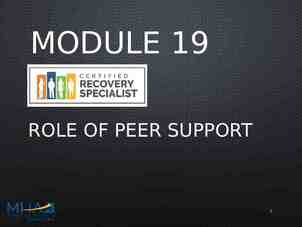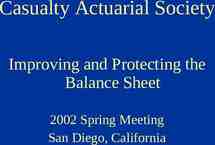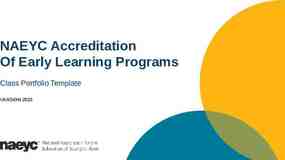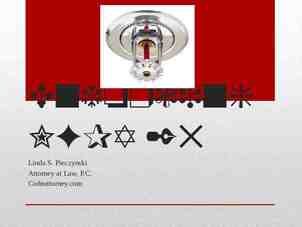Reading Resources: Reading Assessments to Inform Data-Based
44 Slides9.73 MB

Reading Resources: Reading Assessments to Inform Data-Based Decisions Any reference herein to any vendor, product, or service by trade name, trademark, manufacturer, or otherwise does not constitute or imply the endorsement, recommendation, or approval by the Tennessee Department of Education. Updated Spring 2020

Document Use This document has been designed to provide information on reading assessments at varying depths of information. Its purpose is to assist the educator in choosing appropriate assessments to identify a student’s reading strengths and needs (i.e., e.g., basic reading, reading fluency, and reading comprehension) and ultimately inform aligned instruction and intervention in the big ideas of reading. Document Use In Tier I, multiple types of formal and informal evidence informs differentiated instruction that proactively responds to the needs of each learner with the ultimate goal of each student meeting or exceeding grade level expectations. For a student needing Tier II or III intervention in addition to Tier I, the information from the assessment process should provide the foundation for the data-based decisions that the Response to Instruction and Intervention (RTI2) team makes about the student’s intervention intensity and focus. For a student needing special education intervention in addition to Tier I, the information from the assessment process should inform the present levels of educational performance (PLEPs). The PLEPs should guide the individual education plan (IEP) writing process; they are the foundation for the IEP team’s decisions regarding a student’s goals, supports, accommodations, modifications, and services for the next year. The PLEP also provides information for selecting appropriate interventions and supports and services, including the least restrictive environment (LRE). Regardless of the tier, a variety of data sources should be used to make decisions about a student’s instruction and intervention. No single test score should determine a student’s experience within any tier of the RTI2 framework! Throughout the decision making process, teams should consider qualitative data, as well as specific types of quantitative data, including screening, diagnostic, and progress monitoring (grade level and/or survey level). In many cases, it will be necessary to complete diagnostic testing in addition to screening in order to determine a student’s primary needs. For example, if a student scores “at-risk” on a reading fluency screener, the team should perform additional assessments to determine why the student is not reading fluently. Students who are disfluent most often have a primary deficit in basic reading (decoding or phonological awareness) or comprehension that is impacting their fluency. Provided for reference only. Mention does not imply endorsement, recommendation, or approval by the Tennessee Department of Education.

Formatting Notes Assessor Qualifications This document has assessments that could be used by multiple professionals. Some assessments do not have a prescribed assessor qualification level. However, the Tennessee Department of Education (TDOE) recommends that each assessment is administered, scored, and interpreted by a certified teacher with knowledge of both reading content and the assessment. Formatting Note In accordance with the Standards for Educational and Psychological Testing, some assessments in this document are available only to those professionals who have been trained to administer, score, and interpret psychological tests. Each assessment description includes information on its administration qualifications, described below. Qualification Level Description B A degree from an accredited four-year college or university in psychology or counseling related field, plus completion of coursework in test interpretation, psychometrics and measurement theory, educational statistics, or a closely related area; or license or certification from an agency/organization that requires appropriate training and experience in the ethical and competent use of psychological tests. C All Level B qualifications, plus an advanced professional degree that provides appropriate training in the administration and interpretation of psychological tests; or license or certification from an agency that requires appropriate training and experience in the ethical and competent use of psychological tests. S A degree, certificate, or license to practice in a physical or mental health care profession or occupation, plus training and experience in the ethical administration, scoring, and interpretation of clinical behavioral assessment instruments. https://www.pearsonassessments.com/professional-assessments/ordering/how-to-order/qualifications/qualifications-policy.html Age Levels The notation “4:0-24:11” means 4 years 0 months through 24 years 11 months. Provided for reference only. Mention does not imply endorsement, recommendation, or approval by the Tennessee Department of Education.

Simple View of Reading Simple View of Reading Language Comprehension Reading Comprehension Word Recognition Language Comprehension Word Recognition Reading Comprehension 1 x 1 1 0 x 1 0 1 x 0 0 Scarborough, H. S. (2001). Connecting early language and literacy to later reading (dis)abilities: Evidence, theory, and practice. In S. Neuman & D. Dickinson (Eds.), Handbook for research in early literacy (pp. 97–110). New York, NY: Guilford Press. Provided for reference only. Mention does not imply endorsement, recommendation, or approval by the Tennessee Department of Education.

Assessing Parts of Reading Assessing Parts of Reading Reading requires Identifying the words in print (word recognition), constructing an understanding from them (comprehension), and coordinating those two processes so that reading is automatic and accurate (fluency). All reading assessments are not the same. It is critical to ensure that the assessment you choose is designed to answer the question you are asking. Reading Assessment Areas Basic Reading/ Decoding Fluency Comprehension Phonemic Awareness Word Fluency Vocabulary Basic Letter Knowledge Passage Fluency Rhyming and Sound Patterning Accuracy Phonemic Segmentation Prosody Decoding (Phonics) Pace Literal or Basic Detail Recall/Retelling Inferential or Knowledge Learned from Text Provided for reference only. Mention does not imply endorsement, recommendation, or approval by the Tennessee Department of Education.

Table of Contents Reading Assessments PWRS Aimsweb Plus RMPM BAS Really Great Reading CIBS-II SAT-10 CTP SORT-R3 CTOPP-2 STAR (Early Literacy) DAB-4 STAR (Reading) DAB-I TORC-4 DRA-2 TOSWRF-2 EasyCBM WIAT-III GORT-5 WIST Heggerty WJ IV Ach KTEA-3 WRAT5 PALS YCAT-2 Table of Contents QRI-6 Acadience PASI PASS Appendix PAT-2 “Say Dyslexia” Law PSI Dyslexia Evaluation Provided for reference only. Mention does not imply endorsement, recommendation, or approval by the Tennessee Department of Education.

Acadience Reading (Formerly DIBELS) Acadience Reading Ages: NORMS FOR GRADES K-6 Phonemic Awareness: Grades K Letter Naming Fluency: Grades K-1 Phonics: Grades K-2 Reading Fluency: Grades 1-6 Reading Comprehension: Grades 3-6 Administration & Time: 3 minutes per subtest 1:1 Administration Computer or paper administration Assessor Qualification Level: TDOE recommends that each assessment is administered, scored, and interpreted by a certified teacher with knowledge of both reading content and the assessment. Purpose: 1. To screen all students (universal screening tool) 2. To progress monitor broad progress 3. To identify skill-level needs (some subtests) English Learner Options: Spanish IDEL 7a Edicíon Materials: FNL (Letter Naming)/FSF (Phoneme Segmentation): K-1 FPS (Nonsense Word Fluency): K-2 FLO (Oral Reading)/FRO (Retell Fluency): 1-3 FUP (Word Use Fluency): K-3 Additional Information:. Previously known as DIBELS 6th edition and DIBELS Next; materials are the same under a new name. Basic Reading Phonemic Awareness Letter Naming Fluency Phonics Reading Fluency Oral Reading Rate Reading Comprehension K-2: N/A 3-6: DAZE-cloze passages Provided for reference only. Mention does not imply endorsement, recommendation, or approval by the Tennessee Department of Education.

aimswebPlus aimswebPlus Ages: Early Literacy: Grades K-1 R-CBM (ORF): Grades 1-8 Silent Reading Fluency: Grades 4-8 Vocabulary: Grades 2-8 Comprehension: Grades 2-8 Administration & Time: 1-30 minutes per subtest 1:1 or group (varies by subtest) Assessor Qualification Level: TDOE recommends that each assessment is administered, scored, and interpreted by a certified teacher with knowledge of both reading content and the assessment. Purpose: 1. To screen all students (universal screening tool) 2. To progress monitor broad progress (some subtests) 3. To identify skill-level needs (some subtests) English Learner Options: Spanish Options: Letter Naming Fluency: Grades K-1 Letter Sound Fluency: Grades K-1 Syllable Segmenting: Grades K-1 (local norms only) Syllable Reading Fluency: Grades K-1 R-CBM: Grades 1-8 Additional Information: Online testing for grades 2-8 (except ORF) Basic Reading Early Literacy Assessments ORF-Accuracy and Error Rate Reading Fluency ORF-words per minute Silent Reading Fluency Reading Comprehension Vocabulary Reading Comprehension Provided for reference only. Mention does not imply endorsement, recommendation, or approval by the Tennessee Department of Education.

Fountas & Pinnell Benchmark Assessment System (BAS, 3rd edition) Fountas and Pinnell Ages: Grades K-5 Administration & Time: 20-40 minutes 1:1 administration Assessor Qualification Level: TDOE recommends that each assessment is administered, scored, and interpreted by a certified teacher with knowledge of both reading content and the assessment. Purpose: 1. To assess individual reading strengths and needs 2. To observe, record, and evaluate changes in student reading performance English Learner Options: SEL Books: 28 texts from levels A-N in Spanish (approximately grade levels K-3) Additional Information: Aligns with Leveled Literacy Intervention (LLI) progression Gives overall instructional reading level Basic Reading Running record: Accuracy rate, Self-Corrections, and Error analysis Reading Fluency Words per minute at instructional level Reading Comprehension Comp Conversation Rubric Provided for reference only. Mention does not imply endorsement, recommendation, or approval by the Tennessee Department of Education.

Brigance Comprehensive Inventory of Basic Skills (CIBS-II) Brigance Comprehensive Inventory of Basic Skills Ages: Grades Pre-K-9 Administration & Time: 15-30 minutes per subtest 1:1 administration Assessor Qualification Level: TDOE recommends that each assessment is administered, scored, and interpreted by a certified teacher with knowledge of both reading content and the assessment. Purpose: 1. To assess students' strengths and needs in the classroom 2. To monitor growth and progress English Learner Options: Brigance ABS-R (Assessment of Basic Skills-Revised, Spanish edition) for grades Pre-K-9 Additional Information: Subtests include Listening Vocabulary and Comprehension, Word Recognition, Oral Reading, Reading Vocabulary and Comprehension, Word Analysis, Functional Word Recognition, Spelling Basic Reading Word Recognition Functional Word Recognition Word Analysis Spelling Reading Fluency Oral Reading Rate Reading Comprehension Vocab/Listening Comp Vocab/Rdg Comp Provided for reference only. Mention does not imply endorsement, recommendation, or approval by the Tennessee Department of Education.

Comprehensive Testing Program (CTP5/CTP Online by ERB) Comprehensive Testing Program Ages: Grades 1-11 (some subtests begin in grade 3) Administration & Time: 2 ½ - 4 hours Group administration (paper or online) Standardized Assessor Qualification Level: TDOE recommends that each assessment is administered, scored, and interpreted by a certified teacher with knowledge of both reading content and the assessment. Purpose: 1. To assess high-achieving students on content and conceptual knowledge English Learner Options: N/A Basic Reading Word Analysis Additional Information: Gives percentile ranks based on national norms Normed on advanced students Reading Fluency N/A Reading Comprehension Auditory Comprehension Reading Comprehension Vocabulary Provided for reference only. Mention does not imply endorsement, recommendation, or approval by the Tennessee Department of Education.

Comprehensive Test of Phonological Processing (CTOPP-2) Comprehensive Test of Phonological Processing Ages: 4:0-24:11 Administration & Time: 40 minutes 1:1 administration Standardized Assessor Qualification Level: B Purpose: 1. To identify phonological processing difficulties and track progress 2. To identify strengths and weaknesses within phonological processing English Learner Alternative: TOPPS (Test of Phonological Processing in Spanish) for Grades K-Adult Additional Information: Subtests include Elision, Blending Words, Sound Matching, Phoneme Isolation, Blending Nonwords, Segmenting Nonwords, Memory for Digits, Nonword Repetition, Rapid Naming (Digit, Letter, Color, Object) Basic Reading Phonological Awareness Phonological Memory Rapid Naming (Symbolic) Reading Fluency Rapid Naming Reading Comprehension N/A Provided for reference only. Mention does not imply endorsement, recommendation, or approval by the Tennessee Department of Education.

Diagnostic Achievement Battery (DAB4) Diagnostic Achievement Battery Age: 6:0-14:11 Administration & Time: 60-90 minutes 1:1 Standardized Assessor Qualification Level: B Purpose: 1. To assess academic abilities 2. To inform remediation planning English Learner Options: N/A Additional Information: Composite Score: Reading Basic Reading Alphabet/Phonics/Word Identification Spelling Reading Fluency N/A Reading Comprehension Listening Comp Synonyms Reading Comp Provided for reference only. Mention does not imply endorsement, recommendation, or approval by the Tennessee Department of Education.

Diagnostic Achievement Battery Intermediate (DAB-I) Diagnostic Achievement Battery Intermediate Age: 13:0-17:11 Administration & Time: 60-90 minutes 1:1 Standardized Assessor Qualification Level: B Purpose: 1. Assess academic abilities 2. Inform remediation planning English Learner Options: N/A Additional Information: Composite Score: Reading Basic Reading Word Identification Spelling Reading Fluency N/A Reading Comprehension Reading Comp Provided for reference only. Mention does not imply endorsement, recommendation, or approval by the Tennessee Department of Education.

Developmental Reading Assessment (DRA2) Developmental Reading Assessment Age: Grades K-3 Administration & Time: 30-40 minutes 1:1 Administration Assessor Qualification Level: A English Learner Options: EDL2 (Spanish equivalent of DRA2) Purpose: 1. To assess individual reading strengths and needs 2. Observe, record, and evaluate changes in student reading performance Additional Information: Gives overall instructional reading level Basic Reading Running record: Accuracy rate, Self-Corrections, and Error analysis Reading Fluency Words per minute at instructional level Reading Comprehension Retelling Rubric Provided for reference only. Mention does not imply endorsement, recommendation, or approval by the Tennessee Department of Education.

Easy CBM Easy CBM Ages: Norms for Grades K-8 Phoneme Segmenting: Grades K-1 Letter Names/Letter Sounds: Grades K-1 Word Reading Fluency: Grades K-2 Passage Reading Fluency: Grades 1-6 Vocabulary: Grades 2-6 Reading Comprehension: Grades 2-6 Administration Time: 2-30 minutes per subtest 1:1 Administration for most subtests Assessor Qualification Level: TDOE recommends that each assessment is administered, scored, and interpreted by a certified teacher with knowledge of both reading content and the assessment. English Learner Options: Spanish Subtests Syllable Sounds K-1 Syllable Segmenting K-1 Word Reading Fluency K-2 Sentence Reading Fluency K-2 Purpose: 1. To screen all students (universal screening tool) 2. To progress monitor broad progress 3. To identify skill-level needs (some subtests) Additional Information: May be computer or paper administration Basic Reading Letter Names Letter Sounds Phoneme Segmenting Word Reading Fluency Reading Fluency Passage Reading Fluency Reading Comprehension Vocabulary CCSS MCRC Provided for reference only. Mention does not imply endorsement, recommendation, or approval by the Tennessee Department of Education.

Gray Oral Reading Test (GORT-5) Gray Oral Reading Test Age: Ages 6:0-23:11 Administration & Time: 20-30 minutes 1:1 Standardized Assessor Qualification Level: B Purpose: 1. To screen reading fluency and comprehension English Learner Options: N/A Additional Information: N/A Basic Reading Accuracy Reading Fluency Rate Reading Comprehension Passage dependent comp Provided for reference only. Mention does not imply endorsement, recommendation, or approval by the Tennessee Department of Education.

Heggerty Phonemic Awareness Assessments Heggerty Phonemic Awareness Assessments Age: Grades PreK-12 Administration: 1:1 Standardized Assessor Qualification Level: TDOE recommends that each assessment is administered, scored, and interpreted by a certified teacher with knowledge of both reading content and the assessment. Purpose: 1. To assess phonological awareness 2. Observe, record, and evaluate changes in student phonological awareness Additional Information: Free resource: https://www.heggerty.org/download-assessments-and-resource s Reading Basic Reading Reading Word Discrimination Fluency Comprehension Rhyme Recognition & Production Syllable Blending, Segmentation & Deletion Phoneme Recognition, Blending, Segmentation, Deletion Provided for reference only. Mention does not imply endorsement, recommendation, or approval by the Tennessee Department of Education.

Kaufman Test of Educational Achievement (KTEA-3) Kaufman Test of Educational Achievement Age: 4:0-Adult Administration & Time: 15-85 minutes 1:1 Standardized Assessor Qualification Level: B Purpose: 1. To assess key academic skills 2. To determine academic progress English Learner Options: N/A Additional Information: Composite score: Reading, Sound-Symbol, Decoding, Reading Fluency, Reading Understanding, Comprehension, Orthographic Processing Composite Basic Reading Phonological Processing Letter & Word Recognition Nonsense Word Decoding Spelling Decoding Fluency Reading Fluency Silent Reading Fluency Letter Naming Fluency Reading Comprehension Reading Comp Listening Comp Reading Vocabulary Provided for reference only. Mention does not imply endorsement, recommendation, or approval by the Tennessee Department of Education.

PALS PALS Age: Grades PreK-8 Administration & Time: 1:1 or small group Paper/pencil Assessor Qualification Level: TDOE recommends that each assessment is administered, scored, and interpreted by a certified teacher with knowledge of both reading content and the assessment. Purpose: 1. To screen early literacy skills and provide diagnostic information 2. To monitor progress on specific skills Additional Information: Includes guidance for grouping students Basic Reading Phonological & Phonemic Awareness Letter Names & Sounds Word Concepts, Decoding, Word Recognition Spelling Reading Fluency Passage Fluency Reading Comprehension N/A Provided for reference only. Mention does not imply endorsement, recommendation, or approval by the Tennessee Department of Education.

Phonological Awareness Screener for Intervention (PASI) Phonological Awareness Screener for Intervention Age: Grades K-12 Administration & Time: 5-10 minutes 1:1 Paper/pencil Assessor Qualification Level: TDOE recommends that each assessment is administered, scored, and interpreted by a certified teacher with knowledge of both reading content and the assessment. Purpose: 1. To assess phonological awareness 2. To pinpoint deficit skills and guide instruction and grouping Additional Information: Aligns with 95% Group reading intervention materials Includes guidance for grouping students Basic Reading Phonological Awareness: Syllables Onset-rime Phonemes Reading Fluency N/A Reading Comprehension N/A Provided for reference only. Mention does not imply endorsement, recommendation, or approval by the Tennessee Department of Education.

Phonological Awareness Skills Screener (PASS) Phonological Awareness Skills Screener Age: Grades K-12 Administration & Time: 15-20 minutes 1:1 Assessor Qualification Level: TDOE recommends that each assessment is administered, scored, and interpreted by a certified teacher with knowledge of both reading content and the assessment. Purpose: 1. To assess phonological awareness 2. Observe, record, and evaluate changes in student phonological awareness Additional Information: Free resource created by Sopris Learning, part of TN Reading Course Go to https://www.tn.gov/education/article/tdoe3-rti-administrators-intervention-resources (password protected) Basic Reading Word Discrimination Rhyme Recognition & Production Syllable Blending, Segmentation & Deletion Phoneme Recognition, Blending, Segmentation, and Deletion Reading Fluency N/A Reading Comprehension N/A Provided for reference only. Mention does not imply endorsement, recommendation, or approval by the Tennessee Department of Education.

Phonological Awareness Test (PAT-2) Phonological Awareness Test Ages: 5:0-9:11 Administration & Time: 40 minutes 1:1 administration Standardized Assessor Qualification Level: B 2. Purpose: 1. To assess prereading skills To identify students who lack explicit phonological knowledge English Learner Alternative: TPAS (Test of Phonological Awareness in Spanish) for Ages 4:0-10:11 Additional Information: Subtests include Rhyming, Segmentation, Isolation, Deletion, Substitution with Manipulatives, Blending, Graphemes, Decoding Basic Reading Phonological Awareness Phoneme-Grapheme Correspondence Reading Fluency N/A Reading Comprehension N/A Provided for reference only. Mention does not imply endorsement, recommendation, or approval by the Tennessee Department of Education.

Phonics Screener for Intervention (PSI) Phonics Screener for Intervention Age: Grades K-12 Administration & Time: 5-10 minutes 1:1 Paper/pencil Assessor Qualification Level: TDOE recommends that each assessment is administered, scored, and interpreted by a certified teacher with knowledge of both reading content and the assessment. Purpose: 1. To determine where to begin a student’s intervention 2.To group students with similar needs 3.To determine when to move students out of one skill into another Additional Information: Aligns with 95% Group reading intervention materials Includes guidance for grouping students Basic Reading Letter Names and Sounds Decoding Sight Words Reading Fluency N/A Reading Comprehension N/A Provided for reference only. Mention does not imply endorsement, recommendation, or approval by the Tennessee Department of Education.

Phonics and Word Reading Survey (PWRS) Phonics and Words Reading Survey Age: Grades K-12 Administration & Time: 5-10 minutes 1:1 Assessor Qualification Level: TDOE recommends that each assessment is administered, scored, and interpreted by a certified teacher with knowledge of both reading content and the assessment. Purpose: 1. To identify which letter/sounds correspondences and patterns the student has learned, and which ones the student needs to be taught 2. To observe, record, and evaluate changes in student letter/sound correspondence Additional Information: Free resource created by Sopris Learning, part of TN Reading Course Go to https://www.tn.gov/education/article/tdoe3-rti-administrators-intervention-resources (password protected) Basic Reading Letter Naming and Letter-Sounds Correspondences High-frequency Words Word identification by syllable type (closed, long, vowel-r, teams, -le) Encoding letters of the alphabet and 12 sounds Reading Fluency N/A Reading Comprehension N/A Provided for reference only. Mention does not imply endorsement, recommendation, or approval by the Tennessee Department of Education.

Qualitative Reading Inventory (QRI-6) Qualitative Reading Inventory Age: Grades PreK-12 Administration & Time: 15-20 minutes 1:1 Assessor Qualification Level: TDOE recommends that each assessment is administered, scored, and interpreted by a certified teacher with knowledge of both reading content and the assessment. Purpose: 1. To assess individual reading strengths and needs 2. To observe, record, and evaluate changes in student reading performance English Learner Alternative: Spanish Reading Inventory: Pre-K-8 Additional Information: Gives overall instructional reading level Comprehension score differentiates for inferencing Basic Reading Running record: Accuracy, Acceptability, Selfcorrections, and Error analysis Reading Fluency Words per minute at instructional level Reading Comprehension Retelling (unscored) Reading Comprehension (open-ended 50% literal and 50% inferential) Provided for reference only. Mention does not imply endorsement, recommendation, or approval by the Tennessee Department of Education.

Reading Milestones Placement and Monitoring Reading Milestones Placement and Monitoring Age: Ages 6-18 Administration & Time: 10-30 minutes Assessor Qualification Level: A Purpose: 1. To place students within the Reading Milestones program 2. To determine overall approximate instructional reading level, with no verbal output required English Learner Options: N/A Additional Information: Test A is for K-1 readers and Test B is for grade 2-3 readers Basic Reading Word Level Comprehension (word identification implied) Reading Fluency N/A Reading Comprehension Sentence Level Comp Passage Level Comp Provided for reference only. Mention does not imply endorsement, recommendation, or approval by the Tennessee Department of Education.

Really Great Reading Really Great Reading Age: Grades K-12 Administration & Time: 10 minutes per assessment Assessor Qualification Level: TDOE recommends that each assessment is administered, scored, and interpreted by a certified teacher with knowledge of both reading content and the assessment. Purpose: 1. To assess a variety of literacy skills 2. To quickly diagnose a student’s weakness in basic reading skills Additional Information: Most assessments on this site are free, but a few have a cost attached Basic Reading Alphabetic Knowledge Phonological and Phonemic Awareness Decoding Sight Words Reading Fluency N/A Reading Comprehension Functional Vocabulary Provided for reference only. Mention does not imply endorsement, recommendation, or approval by the Tennessee Department of Education.

Stanford Achievement Test (SAT 10) Stanford Achievement Test Age: Grades K-12 (paper) Grades 3-12 (online) Administration & Time: Abbreviated Battery: 3 hours Complete Battery: 5 hours 1:1 (paper); group (online) Standardized Assessor Qualification Level: B Purpose: 1. To identify student strengths and needs 2. To support effective instructional planning English Learner Options: N/A Additional Information: Composite Score: Total Reading Cluster Scores: Word Study Skills, Reading Vocabulary, and Reading Comprehension Basic Reading Structural Analysis Phonetic Analysis-Consonants Phonetic Analysis-Vowels Reading Fluency N/A Reading Comprehension Reading Comp: eight subtests Listening: three subtests Reading Vocabulary: four subtests Provided for reference only. Mention does not imply endorsement, recommendation, or approval by the Tennessee Department of Education.

Slosson Oral Reading Test (SORT-R3) Slosson Oral Reading Test Age: Grades PreK-12 Administration & Time: 3-5 minutes 1:1 Standardized Assessor Qualification Level: TDOE recommends that each assessment is administered, scored, and interpreted by a certified teacher with knowledge of both reading content and the assessment. Purpose: 1. To assess decoding in isolation 2. To determine overall sight word level English Learner Options: N/A Additional Information: Gives a sight word level, not a reading level Basic Reading Sight words Decoding of real words by grade level in isolation Reading Fluency N/A Reading Comprehension N/A Provided for reference only. Mention does not imply endorsement, recommendation, or approval by the Tennessee Department of Education.

Star Early Literacy (Renaissance) Star Early Literacy Age: Grades PreK-3 Administration & Time: 15-20 minutes Computer administered Computer-adaptive Assessor Qualification Level: TDOE recommends that each assessment is administered, scored, and interpreted by a certified teacher with knowledge of both reading content and the assessment. Purpose: 1. To screen/monitor students for reading achievement levels 2. To determine placement in Accelerated Reader (AR) English Learner Options: N/A Additional Information: Provides scaled scores and percentile ranks Basic Reading Word Facility and Skills Reading Fluency N/A Reading Comprehension Sentence-level Comp Paragraph-level Comp Provided for reference only. Mention does not imply endorsement, recommendation, or approval by the Tennessee Department of Education.

Star Reading (Renaissance) Star Reading Age: Grades 1-12 Administration & Time: 20 minutes Computer administered Computer-adaptive Assessor Qualification Level: TDOE recommends that each assessment is administered, scored, and interpreted by a certified teacher with knowledge of both reading content and the assessment. Purpose: 1. To screen/monitor students for reading achievement levels 2. To determine placement in Accelerated Reader (AR) English Learner Options: STAR Reading Spanish: Grades 1-12 Additional Information: *Provides scaled scores and percentile ranks Basic Reading N/A Reading Fluency N/A Reading Comprehension Comp Strategies/Constructing Meaning Analyzing Literary Text Understanding Author’s Craft Analyzing Argument/Evaluating Text Provided for reference only. Mention does not imply endorsement, recommendation, or approval by the Tennessee Department of Education.

Test of Reading Comprehension (TORC-4) Test of Reading Comprehension Age: 7:0-17:11 Administration & Time: 25 minutes 1:1 Standardized Assessor Qualification Level: B Purpose: 1. To assess silent reading comprehension 2. To monitor remediation efforts English Learner Alternative: The Spanish Reading Comprehension Test: difficulty level ranges from three to nine years of education Additional Information: No composite scores Basic Reading N/A Reading Fluency Contextual Fluency (Silent, isolated words per minute) Reading Comprehension Relational Vocabulary Sentence Completion Paragraph Construction Text Comprehension Provided for reference only. Mention does not imply endorsement, recommendation, or approval by the Tennessee Department of Education.

Test of Silent Word Reading Fluency (TOSWRF-2) Test of Silent Word Reading Fluency Age: 6:3-24:11 Administration & Time: 3 minutes to administer to individuals or groups Assessor Qualification Level: A Purpose: 1. To quickly assess the silent word identification ability of school-age students English Learner Options: N/A Additional Information: An additional screening tool Primarily a measure of speed of silent word identification Design: given rows of words without spaces (dimhowfigblue), draw a line showing the boundaries for three minutes (dim/how/fig/blue) Basic Reading Isolated word identification Reading Fluency *Silent, isolated words per minute Reading Comprehension N/A Provided for reference only. Mention does not imply endorsement, recommendation, or approval by the Tennessee Department of Education.

Weschler Individual Achievement Test (WIAT-III) Weschler Individual Achievement Test Age: Grades Pre-K-12 (4:0-Adult) Administration & Time: Varies by grade level and number of subtests 1:1 Standardized Assessor Qualification Level: B Purpose: 1. To identify academic strengths and weaknesses 2. To inform instructional decisions English Learner Options: N/A Additional Information: Composite scores: Oral Language, Total Reading, Basic Reading, Reading Fluency & Comprehension Basic Reading Early Reading Skills Word Reading Pseudoword Decoding Spelling Reading Fluency Oral Reading Fluency Reading Comprehension Listening Comp Reading Comp Provided for reference only. Mention does not imply endorsement, recommendation, or approval by the Tennessee Department of Education.

Word Identification and Spelling Test (WIST) Word Identification and Spelling Test Age: 7:-18:11 Administration & Time: 40 minutes 1:1 (spelling could be group) Standardized Assessor Qualification Level: B Purpose: 1. To assess individual needs in decoding & encoding 2. To analyze and diagnosis by syllable type (color-coded for analysis) English Learner Options: N/A Additional Information: Elementary version for grades 2-5 Secondary version for grades 6-12 Provide standard scores for Word Identification, Spelling, and Sound-Symbol Knowledge Basic Reading Word Identification (regular/irregular/nonwords) Spelling (regular/irregular) Letter/Sound Knowledge Reading Fluency N/A Reading Comprehension N/A Provided for reference only. Mention does not imply endorsement, recommendation, or approval by the Tennessee Department of Education.

Woodcock-Johnson IV Tests of Achievement and Oral Language (WJ AchIV IV) Woodcock Johnson Tests of Achievement and Oral Language Age: Grades Pre-K-12 (4:0-Adult) Administration & Time: Varies by grade level and number of subtests 1:1 Standardized Assessor Qualification Level: Medium (Similar to a B) Click here for more information Purpose: 1. To identify and describe patterns of performance across achievement 2. To determine academic strengths and weaknesses English Learner Options (Spanish): Clusters: Oral Language, Broad Oral Language, and Listening Comprehension Subtests: Vocabulario sobre dibujos, Comprensión oral, and Comprensión de indicaciones Additional Information: Cluster scores: Phoneme-Grapheme Knowledge, Reading, Broad Reading, Basic Reading, Reading Comprehension, Reading Fluency, Reading Rate, Oral Language, Total Reading, Basic Reading, Reading Fluency & Comprehension, Oral Language Basic Reading Letter-Word Identification Word Attack Spelling Segmentation Sound Awareness & Blending Reading Fluency Rapid Picture Naming Oral Reading Sentence Reading Fluency Reading Comprehension Passage Comp Oral Comp Listening Comp Provided for reference only. Mention does not imply endorsement, recommendation, or approval by the Tennessee Department of Education.

Wide Range Achievement Test (WRAT5) Wide Range Achievement Test Age: Grades Pre-K-12 (5:0-Adult) Administration & Time: 15-45 minutes 1:1 Standardized Assessor Qualification Level: B Purpose: 1. To assess academic skills 2. To screen for further evaluation English Learner Options: N/A Additional Information: Composite Score: Reading Basic Reading Word Reading Spelling Reading Fluency Reading Comprehension Sentence Comprehension Provided for reference only. Mention does not imply endorsement, recommendation, or approval by the Tennessee Department of Education.

Young Children’s Achievement Test (YCAT-2) Young Children’s Achievement Test Age: 4:0-7:11 Administration & Time: 25-45 minutes 1:1 Standardized Assessor Qualification Level: B Purpose: 1. To assess academic skills 2. To screen for further evaluation English Learner Options: Spanish Version: PHAI (Prueba de Habilidades Académicas Iniciales) Additional Information: Composite Score: Reading Basic Reading Reading subtest (includes concepts about print, phonological knowledge) Reading Fluency N/A Reading Comprehension Reading subtest (basic listening comp at some levels) Provided for reference only. Mention does not imply endorsement, recommendation, or approval by the Tennessee Department of Education.

Appendix

“Say Dyslexia” Law Screening Procedures “Say Dyslexia” Law Screening Step OneProcedures Per the “Say Dyslexia” Law (Public Chapter No. 1058), districts are required to screen students for characteristics of dyslexia through their RTI 2 universal screening process. Screen all students using a skills-based screener If a standards-based assessment is used to screen all students instead of a skills-based universal screener, a skills-based screener is necessary to identify more specific skills area(s). Step Two Step Three Consider additional sources of information to identify “at-risk” students. Conduct survey-level diagnostic assessments to inform intervention needs. The screening process must include assessment of the characteristics of dyslexia, defined by the law. Each is defined in the table below. Difficulties General Definition Phonological awareness When a child listens, the ability to recognize and identify sounds and words in spoken language when no print is involved (e.g., recognize and identify individual words within sentences, sounds and syllables within words, blending and changing sounds to create new words, and rhyming) Phonemic awareness The awareness of individual sounds within the spoken word and the ability to manipulate those sounds when no print is involved (i.e., a subcomponent of phonological awareness) Alphabet knowledge Ability to name letters of the alphabet Sound/symbol recognition Ability to identify the sounds that letters or letter combinations make Decoding skills Ability to sound out words and read words using phonics (linking letters and sounds) Encoding skills Ability to spell words Rapid naming Ability to quickly and accurately name familiar things (e.g., letters, objects, shapes, colors, etc.) Provided for reference only. Mention does not imply endorsement, recommendation, or approval by the Tennessee Department of Education.

Dyslexia Evaluation A dyslexia evaluation is not required for a school to provide interventions to address characteristics of dyslexia; however, if a parent chooses to seek an evaluation (outside the school system) for dyslexia and shares the results of the evaluation obtained at private expense with the school district, the school must consider the results of the evaluation in any decision made with respect to the provision of a free appropriate public education (FAPE). Schools are required to screen for characteristics; however, a school team may choose to further assess for the full profile of dyslexia. The International Dyslexia Association (IDA) lists the typical battery*: Dyslexia Evaluation Background Information Intellectual Functioning Achievement Testing Word Reading Reading comprehension Decoding Spelling Written expression Listening comprehension Phonological processing Automaticity/fluency skills *Assessments require varying levels of certification and permission. Refer to your school psychologist for more information. Provided for reference only. Mention does not imply endorsement, recommendation, or approval by the Tennessee Department of Education.

Contact Information Kate Martin Senior Director of Special Education Division of Special Populations [email protected] Joanna Bivins Director of School Psychology and Behavior Services Division of Special Populations [email protected] Angela Wegner Intervention Supports and Best Practices Coordinator Division of Special Populations [email protected] Provided for reference only. Mention does not imply endorsement, recommendation, or approval by the Tennessee Department of Education.

Any reference herein to any vendor, product or service by trade name, trademark, manufacturer, or otherwise does not constitute or imply the endorsement, recommendation or approval by the Tennessee Department of Education. This is only a sampling of available products and services. If you would like your product or service to be considered for addition to the list, please contact Kate Martin.






